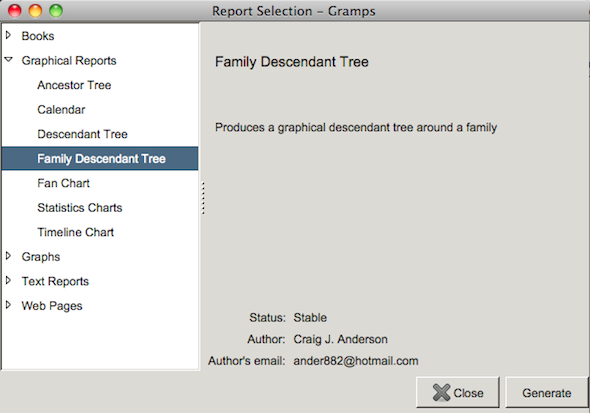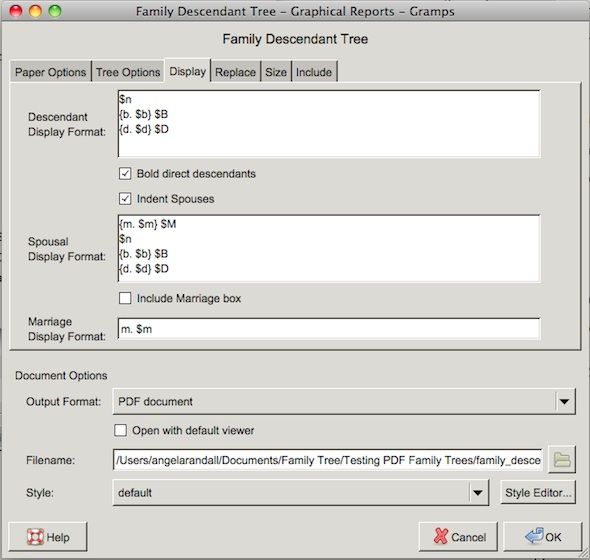At some point in your life, you've probably considered looking into your family tree and making sense of it all. If you're the technical guru of the family, you've possibly also considered how you might digitise all the information your family has collected in order to make a neat-looking family tree to pass around to all the relatives. Thankfully, this part of the process is easy and can be completely free.
Gramps is free, open-source family tree making software, which is very customisable and will work with all standard databases of family tree data. It's been around a long time, but over the years it has evolved and improved quite a bit. You can use it to enter your family tree data, create family tree prints or analyse and graph your findings. It's quite powerful and each of its tools could easily warrant an article alone. Today we'll focus on building the best family tree printouts for you.
Why Use Family Tree Software?
While there are a number of great family tree websites online, such as MyHeritage.com, which allow you to create your family tree, connect with family members and research your ancestors further by collaborating with other people, it's also worth looking into software you can have on your own computer to generate and print a family tree and to back up your data. This is not just a matter of being sensible, it can be cost effective too. Many of the online family tree makers will charge extra to be able to print your family tree. Most of the online services only offer limited customisation for family tree prints, too, which may not give you the details you require.
Why Use Gramps?
With the right software, you can easily create family tree PDFs ready to email or print out. Gramps is free software and it offers the most customisable family tree prints of any genealogy software. You can use Gramps to enter your family tree data, or you can import it from another program or website. This makes it easy to share data with family or to work with data you created using another service. Personally, I like to enter my family tree data in to Geni.com [Broken URL Removed], export the .GED file, then import the data into Gramps to create family tree printouts. This gives you the best of both worlds, plus an online and offline backup of your data.
Different Types Of Gramps Family Tree Displays
Gramps can be used by hobbyists as well as professional genealogists and there are a huge number of graphs and reports you can print out. These can be fancy fan charts, lists of relevant events, birthday and anniversary printouts, descendant charts, relationship charts and much more. If you're keen to analyse the data you've collected, these reports will help you to do so easily.
As a hobbyist, I'm a big fan of the "Family Descendant Tree" report, where you can pick a couple and show all of their descendants, plus their parents. It's the ideal way to show all of the members in a particular branch of the family, including cousins and second cousins. In fact, you can view several generations of family this way, although the report will be quite large if you do.
Customisation Of Reports
Once you've settled on a report you'd like to print out, there's still a lot of customisation you can do to make it just right. This includes the ability to choose the format of the name, how dates are written, the data that is shown, how many people to include in the report, capitalisation, bolding, fonts and more. In fact, anything that can be adjusted using CSS can be personalised to suit your taste.
As for the data, Gramps has changed how customisation works. The new variable formats can be found in this guide, but are generally quite easy to understand. For instance, you can reformat the names using f for first name and l for last name. If you use a capital letter you will get that name in capitals. Here are two popular ways to format names:
$n(f L) "Angela ALCORN"
$n(l, f) "Alcorn, Angela"
It's entirely up to you what information is shown. It's also possible to hide lines if the data isn't there, such as the dates and locations of births, deaths and marriages. This is done using a curly bracket around the variables.
The size of the page can be adjusted too. You can choose to print on a number of A4 sheets, on a giant size page or just a PDF of however big the page needs to be. You can then choose whether you want to print it yourself for free and put it together or use a professional printer to make a huge chart on one page.
If you want to control the output further, it's possible to export as PDF, OpenDocument, SVG or postscript. This gives you as many options as possible.
Alternatives To Gramps
Gramps is unique among most family tree software in that it is free and can be used on Mac, Windows and Linux. There are very few free alternatives and none of those can compete on platform flexibility or report generation. If you don't like the input mechanism used on Gramps though, it's possible to use an online service or another program to enter the data, as Gramps will import it easily.
What do you use Gramps for? Are you a professional genealogist or more of a hobbyist? Let us know in the comments.





